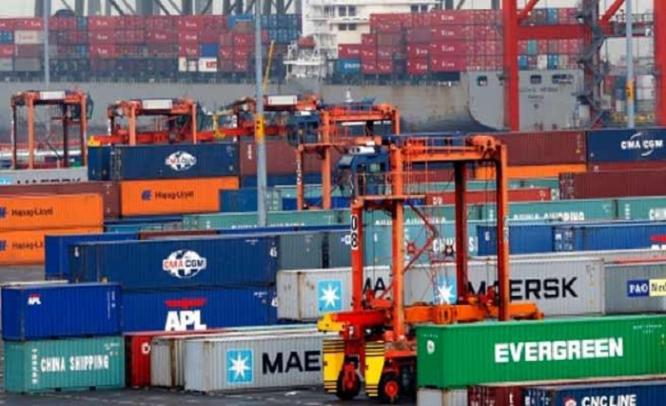As trade deficit shrinks there is clamour that the 10 percent levy on gold imports should go, but a decision to do that would be premature, reports Team IFM
New Delhi, June 17: India’s trade deficit narrowed in April as exports grew 5.26 percent in dollar terms from a year ago and gold imports plummeted, easing pressure on the current account balance, according to government data.
The April trade deficit stood at $10.1 billion, down from $10.51 billion in March, the data, released recently by the Commerce and Industry Ministry, said.
Gold imports fell as much as 74.1 percent in the first month of the fiscal year 2014-15 from a year earlier. The huge drop could strengthen demand for easing of restrictions that the government had imposed on gold imports last year to strengthen the rupee and rein in the current account deficit.
Former Finance Minister P. Chidambaram had hiked the import tax on gold from 2 to 10 percent and introduced administrative controls that helped bridge the current account gap.
The new Bharatiya Janata Party (BJP) government is expected to tread a different path since Narendra Modi as its prime ministerial candidate had promised to ease restrictions on gold imports claiming that these curbs had led to smuggling. Any action on the gold front should take into account the interests of the public and traders, not just economics and policy, Modi had said.
Analysts, however, said early easing of restrictions on gold imports was fraught with danger as this step along with a recovery in the economy could lead to a surge in the import bill again.
“Risks are that the current account deficit could re-widen back to 3 percent if gold imports rebound sharply when trade restrictions are lifted, along with an improvement in the domestic investment cycle,” Reuters quoted DBS as stating in a research note.
India’s current account deficit is estimated to fall to around $35 billion in the fiscal year 2013-14 from about $88 billion the previous year.
IMPORTS SHRINK
In April, imports declined 15 percent year-on-year to $35.72 billion indicating that industrial recovery was still far away. So, higher exports and a decrease in import helped lower the trade deficit to $10.1 billion, compared with $17.7 billion a year ago.
The government figures raise hopes that the improvement in the current account deficit last financial year will continue this year as well. During the month under review, exports went down 3.2 percent to $25.6 billion compared with the previous month while imports were worth $35.7 billion, according to the Commerce and Industry Ministry data.
“The new Foreign Trade Policy should initiate measures for competitive manufacturing in the country both for augmenting exports and substituting imports,” M Rafeeque Ahmed, president of the Federation of Indian Export Organisations, said in a statement. Ahmed wanted the government to fix a $750-billion export target by 2019.
India’s exports in the financial year 2013-14 amounted to $312 billion. Non-oil imports in April were put at $22.7 billion, down 21.5 percent from a year ago. While this indicated the strength of the economy, the contraction in imports tells us the expected recovery in the industrial space has not yet happened.
The current account deficit is expected to improve to around 2 percent of GDP this fiscal year from an all-time high of 4.8 percent recorded in the last fiscal year. The low trade deficit in April and the rise in exports trigger hopes that the current account deficit will be confined to a comfortable range, although it could go up if the economy recovers and the import curbs on gold go.
“Trade deficit will tend to deteriorate further, but it is not a big concern,” The Times of India quoted Madan Sabnavis, chief economist, CARE Ratings, as saying. In absolute terms, exports were at their lowest in five months but, traditionally, April is a weak month and that makes the year-on-year comparison more relevant.
Overseas sales of engineering goods, which led the recovery in exports, went up 21.25 percent to $5.75 billion followed by the drugs and pharmaceuticals sector that clocked growth of 10.41 percent.
Man-made yarn and fabrics (11.74 percent) and readymade garments (14.33 percent) also contributed to the recovery in exports.
Gems and jewellery exports fell 8.1 percent partly because gold imports went down from $6.78 billion last year to $1.76 billion in April this year. A part of the imported gold is exported as jewellery.
Silver imports were down 26.5 percent at $468 million. Imports of iron and steel, machinery, electrical and non-electrical goods, transport equipment and project goods all contracted 6 percent – a clear indication that investments were not picking up.
Merchandise exports were up 5.26 percent from a year earlier at $25.63 billion, after falling 3.15 percent in March.
GOLD STORY
Gold imports will probably increase following the Reserve Bank of India decision to allow more companies to import the yellow metal. Inbound shipments may rise from 10 to 15 metric tonnes a month, which will also increase domestic supplies, Bloomberg quoted Bachhraj Bamalwa, a director with the All India Gems & Jewellery Trade Federation, as saying over the phone.
The BJP forming government with a single-party solid majority, a stronger domestic currency and narrowing of the current account deficit all spurred speculation that control may be eased. The government continues to levy a 10 percent import duty and requires importers to supply 20 percent of bullion to jewellers for export.
“Supply will increase, bringing down the prices and premiums in the local markets and we will see demand improving,” Bamalwa told Bloomberg.
Importers sell the remaining 80 percent to the domestic market and need to wait until the 20 percent share is exported as jewellery before shipping in the next consignment.
The central bank allowed star and premier trading companies approved by the Directorate General of Foreign Trade to import gold under the 80:20 arrangement. The RBI also eased some financing rules allowing banks to give gold metal loans to jewellers.


